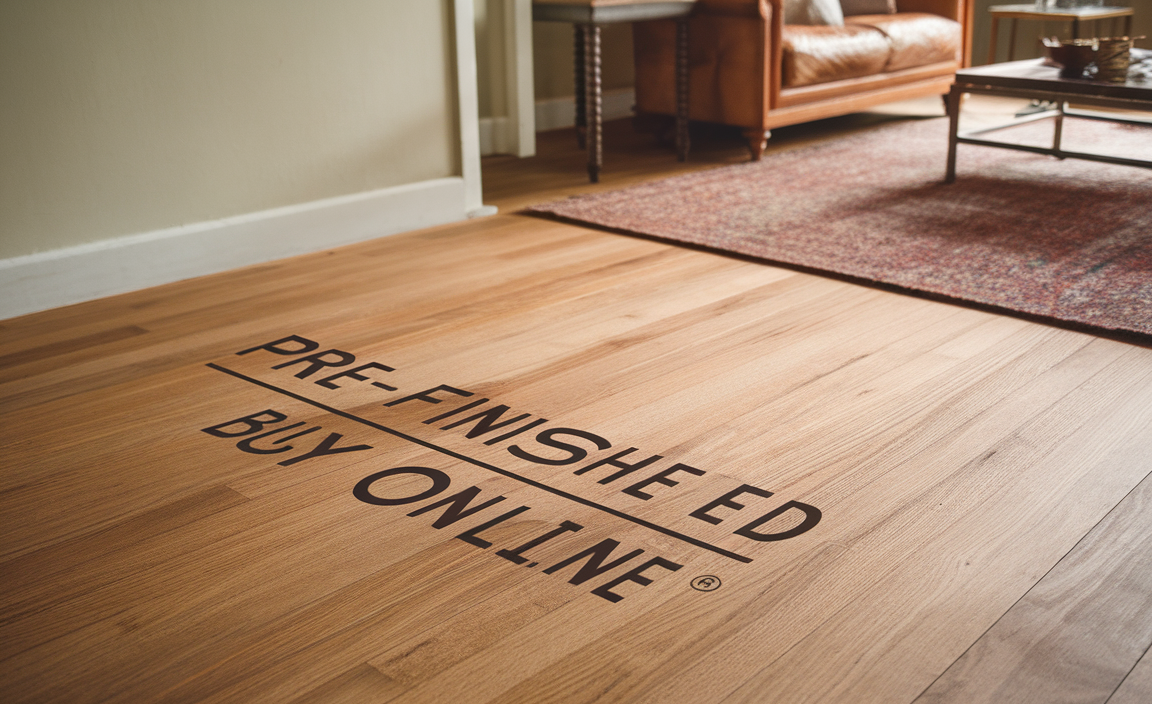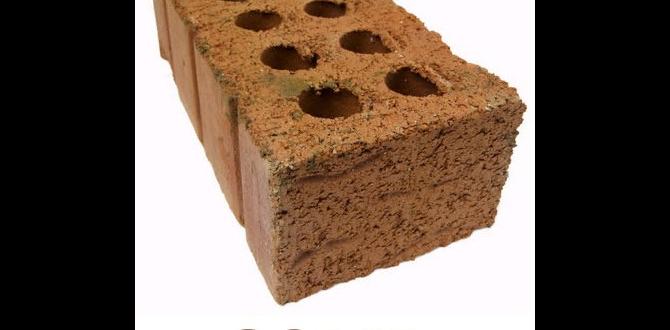Your nailer safety checklist ensures you avoid common accidents. Always inspect compressed air lines, the nail gun itself for damage, wear appropriate safety gear, and never point it at anyone, even when not actively firing. A diligent check before each use protects you and others.
Hey there, DIYers and woodworking fans! Jack Shaffer here from Nailerguy. Ever feel a little nervous picking up a nailer for the first time? Or maybe you’ve had a close call that made you think twice? You’re not alone! Nailers are fantastic tools that can make projects go so much faster, but they pack a powerful punch. That’s why knowing how to use them safely is super important. We don’t want any little injuries stopping us from creating amazing things, right? This guide is all about making sure you’re prepared. We’ll walk through a simple, step-by-step checklist so you can feel confident and secure every time you pick up your nailer. Let’s dive in and make sure your projects are as safe as they are successful!
Table of Contents
Why a Nailer Safety Checklist Is Crucial
Nail guns are incredibly useful for a wide range of projects, from framing a deck to installing crown molding. They can speed up your work significantly and give your projects a professional finish. However, the very power that makes them so efficient also makes them potentially dangerous if not handled with care. Without proper safety measures, nail guns can cause severe injuries, including deep puncture wounds, damage to eyes, and even more serious complications.
Think of a nailer as a vital tool in your DIY arsenal, but one that demands respect. Just like you wouldn’t start a car without checking the gas and tires, you shouldn’t operate a nail gun without a quick safety check. This simple process can prevent workplace accidents and ensure you get to enjoy your finished projects without any unfortunate hospital visits.
The Occupational Safety and Health Administration (OSHA) provides extensive guidelines on nail gun safety, highlighting the importance of training and proper equipment usage. Following a checklist is a proactive way to adhere to these best practices and build a habit of safe operation.
In this guide, we’ll break down exactly what you need to check before, during, and after using your nailer. We’ll cover everything from your personal protective equipment to the condition of the tool itself and its air supply. Ready to build that confidence and hammer home some safety? Let’s get started!
Before You Even Touch the Nailer: Prep Work
Safety starts long before you pull the trigger. Proper preparation is key to preventing accidents. This involves understanding your work environment and setting it up for safe nailer operation.
Understanding Your Work Area
Before you load up your nailer, take a moment to assess your surroundings. Is the area cluttered? Are there tripping hazards like tools, cords, or debris? Ensure you have a clear, stable workspace. This is especially important when working on ladders or elevated platforms. A stable footing greatly reduces the risk of losing balance and accidentally firing the nailer.
Also, consider who else is around. Are there children or pets nearby? It’s best to keep them at a safe distance while you’re operating any power tool, especially a nail gun. Ensure that any bystanders are aware you are working and understand not to approach until you’ve finished and the tool is powered down.
Personal Protective Equipment (PPE)
This is non-negotiable! Your PPE is your first line of defense against injury. Don’t skip any of these items, no matter how small or quick the job seems.
- Eye Protection: Always wear safety glasses or goggles that meet ANSI Z87.1 standards. Flying debris or nails can cause serious eye damage. Make sure they fit snugly and don’t obstruct your vision.
- Hearing Protection: Nail guns can be loud, especially in enclosed spaces. Earplugs or earmuffs will protect your hearing from long-term damage.
- Gloves: Work gloves provide a better grip on the tool and protect your hands from splinters, abrasions, and even accidental tool contact.
- Footwear: Sturdy, closed-toe shoes are essential. Steel-toed boots are ideal for maximum protection against dropped tools or materials.
- Long Sleeves and Pants: These offer an extra layer of protection against minor scrapes and abrasions.
Tool Selection and Understanding
Every nailer is designed for specific tasks. Using the wrong type of nailer can not only be inefficient but also unsafe. For instance, a framing nailer drives large nails for heavy-duty construction, while a brad nailer is for more delicate trim work. Ensure you are using the appropriate tool for your job and that you understand its specific operation.
Read the manufacturer’s manual! Seriously. It’s full of crucial information about your specific nailer’s safety features, maintenance, and operating procedures. Knowing how your tool works is fundamental to using it safely.
The Nailer Safety Checklist: Pre-Use Inspection
Now, let’s get down to the tool itself. A thorough pre-use inspection takes just a few minutes but can save you from a serious mishap. For this checklist, we’ll focus on the most common types of nailers: pneumatic (air-powered) and cordless.
For Pneumatic (Air-Powered) Nailers
These are the workhorses of many construction and woodworking jobs. They rely on an air compressor, so we need to check the whole system.
- Check the Air Hose: Inspect the entire length of the air hose for any cracks, cuts, abrasions, or leaks. A damaged hose can burst under pressure. Ensure the couplings are secure and free of debris.
- Check the Air Compressor: Make sure the compressor is turned off and unplugged. Check the oil level if it’s an oil-lubricated model. Ensure the air filter is clean and the drain valve is functional and clear of obstructions.
- Regulator and Gauge: Ensure the pressure regulator is set to the manufacturer’s recommended PSI for your nailer. Check the gauge to confirm it’s working correctly. Over-pressurizing can cause severe damage to the tool and a higher risk of recoil and misfires. Refer to the nailer’s manual for the correct operating pressure.
- Nailer Body and Trigger: Look for any visible cracks, damage, or loose parts on the nailer’s housing. Ensure the trigger operates smoothly and isn’t sticking. Check that the safety contact tip (the part that rests against the material) is free to move and not jammed.
- Magazine: Make sure the nail magazine is clean, free of debris, and locks securely. Check that it slides smoothly and isn’t bent or damaged.
- Nails Loaded: If nails are loaded, ensure they are the correct size and type recommended for your nailer. Incorrect nails can cause jams and damage the tool.
For Cordless Nailers (Battery or Fuel-Powered)
Cordless nailers offer portability, but still require diligent checks.
- Battery Charge: Ensure the battery is fully charged and securely attached to the tool. A dying battery can lead to inconsistent performance.
- Fuel Cell (if applicable): If you’re using a fuel-powered model, check that the fuel cell is properly inserted and has sufficient fuel.
- Nailer Body and Trigger: Similar to pneumatic nailers, inspect the housing for any damage, cracks, or loose components. The trigger and safety contact tip should move freely.
- Magazine: Confirm the magazine is clean, not bent, and that nails load smoothly. Jams are more likely if the magazine is obstructed.
- Nails Loaded: Use only the specific type and size of nails recommended by the manufacturer.
Using the Nailer Safely: In Action
Now that your tool is prepped and ready, let’s talk about safe operation while you’re actually using the nailer.
Proper Handling and Grip
Always hold the nailer firmly with both hands, if possible. This provides better control and reduces the risk of recoil and losing your grip. Keep your fingers away from the trigger when you’re not actively firing a nail. The trigger is designed to be pressed when the safety contact tip is depressed against a surface.
The Safety Contact Tip Is Your Friend
Never bypass the safety mechanism. The safety contact tip (sometimes called the safety nose or contact trip) must be pressed firmly against the work surface for the nailer to fire. This prevents accidental discharge when you’re just moving the tool or if it’s dropped.
Important rule: Never “dry fire” the nailer. This means intentionally pressing the trigger without the safety contact tip against a surface. It can damage the tool and is a common cause of accidental nail discharge.
Never Point at Yourself or Others
This might seem obvious, but it’s worth repeating: never, ever point the nailer at any part of your body or at another person, even if it’s not loaded or the air is disconnected. An accidental discharge could have severe consequences. Treat the nailer as if it’s loaded and ready to fire at all times.
Securing Your Workpiece
Ensure the material you are nailing into is stable and secure. If you’re nailing into thin material or at an angle, the nail can go straight through and out the other side, or ricochet. Clamps are your best friend here! Use them to hold your workpiece firmly in place. This prevents the material from shifting as you nail and ensures the nail goes where you intend it to.
Working at Angles and Recoil
Be mindful of recoil. Nailers can “kick back” when firing. Maintain a firm grip and be prepared for this movement. When nailing at an angle, the nail can exit the material at an unexpected point. Always be aware of where the nail might emerge, especially if you’re working with thin materials or through joints.
Powering Down and Unloading
When you’re finished with a nailing session, or if you need to reposition, always:
- Disconnect the air supply (for pneumatic nailers).
- Remove the battery (for cordless nailers).
- Remove the fuel cell (for fuel-powered nailers).
- Remove any remaining nails from the magazine. This is the safest way to store or transport the tool.
Storage and Maintenance for Long-Term Safety
Proper storage and regular maintenance are crucial for ensuring your nailer remains safe and reliable over time.
Safe Storage Practices
When not in use, store your nailer in a clean, dry place. For pneumatic nailers, it’s a good idea to disconnect the air hose, drain any residual air from the tool and the hose, and perhaps hang it up or store it in its original case. For cordless nailers, remove the battery and store it separately according to the manufacturer’s instructions.
Keep the nail gun out of reach of children and untrained individuals. A locked cabinet or a secure tool bag is a good option.
Regular Maintenance Tips
Cleaning: After each use, wipe down your nailer to remove dust and debris. Pay special attention to the magazine and the safety contact tip. A clean tool functions better and is safer.
Lubrication: For pneumatic nailers, follow the manufacturer’s recommendation for lubrication. Some tools require a few drops of oil in the air fitting daily, while others are designed to be maintenance-free. Over-oiling can cause problems, so stick to the manual’s guidance.
Inspections: Periodically inspect the nailer for wear and tear. Check the O-rings, springs, and other internal components if you’re comfortable doing so, or have a professional service it. Worn parts can lead to malfunctions.
Nailer Jam Clearing: Jams are inevitable. Your nailer’s manual will detail how to safely clear a jam. Always disconnect the power source (air or battery) and remove any loaded nails before attempting to clear a jam.
Nailer Categorization and Associated Safety Considerations
Different types of nailers have specific safety nuances. Understanding these can further enhance your safety practices.
| Nailer Type | Primary Use | Key Safety Considerations |
|---|---|---|
| Framing Nailer | Heavy-duty construction, framing walls, building decks | High power, significant recoil. Always use adequate PPE, especially hearing protection. Ensure proper grip and stable footing. |
| Finish Nailer (15-gauge, 16-gauge) | Attaching baseboards, crown molding, window/door trim | Less recoil than framing nailers, but still powerful. Ensure accurate nail placement to avoid ricochets through delicate trim. |
| Brad Nailer (18-gauge) | Attaching small trim, delicate moldings, furniture assembly | Lighter duty, but can still cause injury if mishandled. Watch for nails exiting thin materials unexpectedly. |
| Staple Gun (Nailer Style) | Upholstery, attaching fabric, light-duty projects | Staples can penetrate deeply. Ensure material is stable and be aware of where staples will emerge. |
| Concrete/Siding Nailer | Attaching siding to concrete, brick, or steel | Requires specialized fasteners and can generate high forces. Extreme caution and specific training are recommended. Consult OSHA guidelines for powder-actuated tools if applicable. |
When working with power-actuated tools (like those that use gunpowder charges to drive fasteners into concrete or steel), the safety requirements are even more stringent. The OSHA standard for powder-actuated tools (29 CFR 1926.300) emphasizes training, proper tool maintenance, and strict adherence to operating procedures.
Recognizing and Preventing Common Nailer Hazards
Understanding common hazards is the first step to preventing them.
Accidental Discharge
- Cause: Bypassing safety contact tip, dropping the tool, trigger malfunction.
- Prevention: Always use the safety contact tip, maintain a firm grip, never point at anyone, disconnect power when not in use, and keep fingers off the trigger.
Recoil and Kickback
- Cause: Firing a nail, especially a large one, or firing into hard material.
- Prevention: Maintain a strong grip, brace yourself, and be prepared for the tool to move.
Nail Ricochet or Penetration
- Cause: Nailing into hard surfaces, thin materials, or at awkward angles.
- Prevention: Use clamps to secure workpieces, understand material thickness, and be aware of where the nail will exit. Never nail into knots in wood, as nails can bend and deflect unexpectedly.
Flying Debris
- Cause: Wood splinters, nail fragments.
- Prevention: Always wear ANSI-approved safety glasses or goggles.
Hearing Damage
- Cause: Loud noise from the nailer.
- Prevention: Use earplugs or earmuffs.
Quick Reference: Nailer Safety Dos and Don’ts



